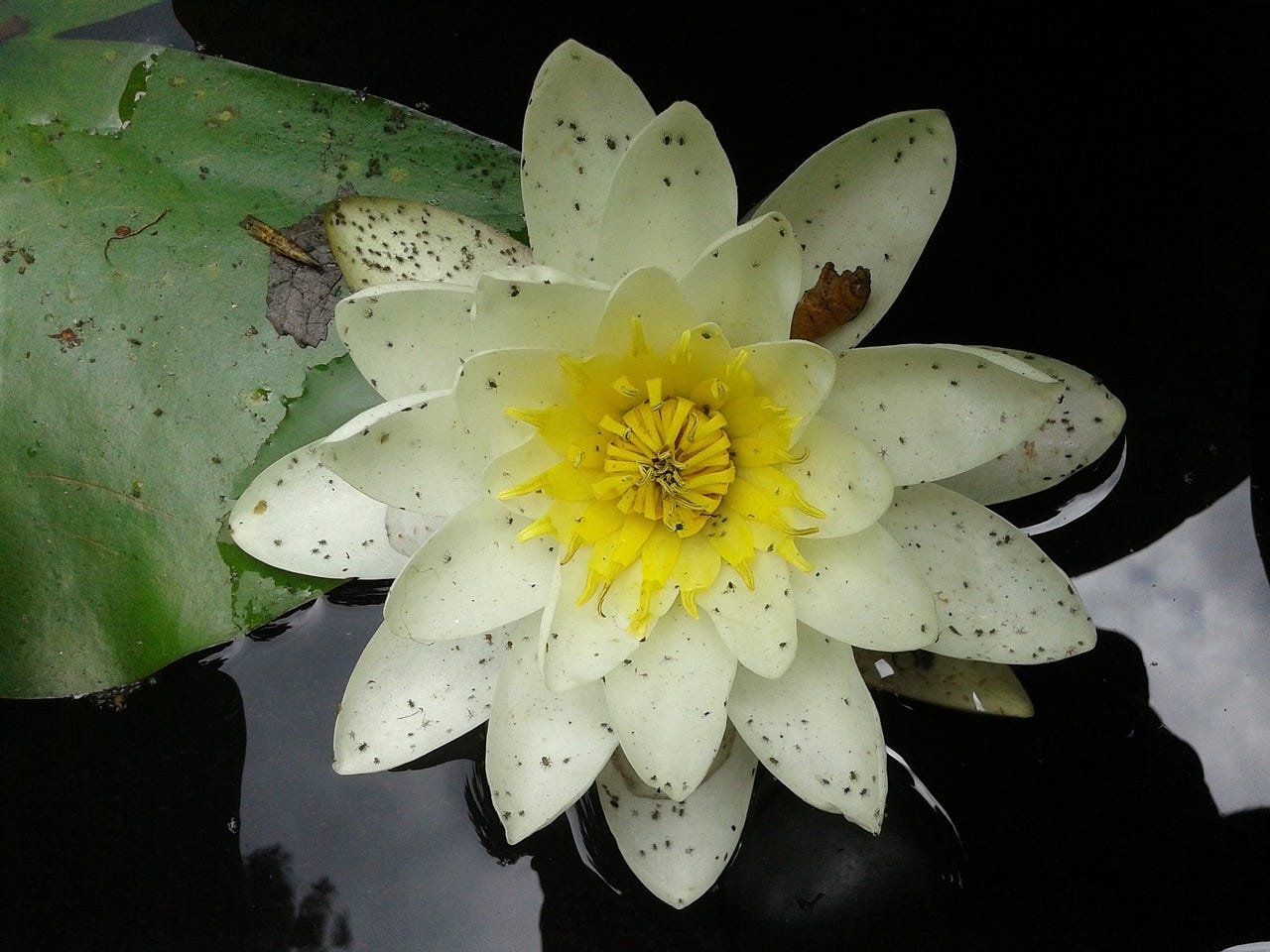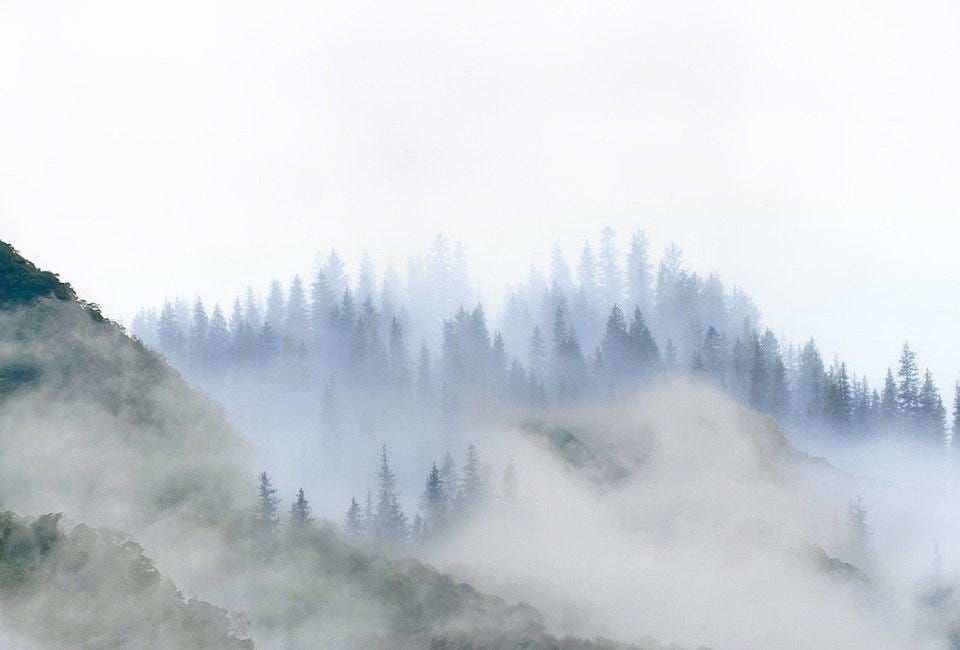Chapter 1: The Organization of the Kingdoms
I want to introduce you to a fantastical world – the Kingdoms of Creation.Imagine, if you will, a world where six kingdoms live side by side, each with a type of creatures of its own.
Part 1: A Bird’s Eye View of the Kingdom
[W]e look not at the things which are seen, but at the things which are not seen: for the things which are seen are temporal; but the things which are not seen are eternal.
-2 Corinthians 4:18, KJV
Everything that you can see in this world is a part of creation – that wonderful, terrible, awe-inspiring everything that you can see and hear and smell. There is also a good bit of creation that it is impossible to detect with your senses, a part of an invisible unseen realm of the soul; this is a wonderful part of our universe, but not something that we will talk about here because those things are not science. Science can tell us many wonderful and important things about what we can see or hear or smell or touch in some way, so that is what we will talk about here. Those other things will have to be left for philosophy or religion or perhaps a good book.
The most amazing thing about all that we can sense the world is that they are all orderly. Everything from the rocks and trees to the stars and seas can be organized and understood. How can this be when there are so many different kinds of things in the world? It is so because creation has a Creator – the One who made all of those things. Because the Creator is orderly, He made creation to be orderly as well; because creation is orderly, we can understand how the world works. We, too, are a part of creation – a special creature made by the Creator known as a human.
We are mostly going to talk here about the part of creation that is alive. That is what biology is about – the study of life. What does it mean for something to be alive? That can be a hard question to answer, but we will consider it in the next chapter. For now, all we need to know is that things that are alive are known as creatures.
Before we go any further, I want to introduce you to a fantastical world – the Kingdoms of Creation. Imagine, if you will, a world where there are six kingdoms that live side by side with each other. Each kingdom has creatures of a similar kind: some seem to have almost nothing in them, except maybe some green scum (the Kingdoms of Bacteria, Archaea [ar-kay-uh], and Protists), others are filled with silent citizens (the Kingdoms of Fungi and Plants), while just one is a raucous riot of movement (the Kingdom of Animals).
We are going to look at each of these remarkable kingdoms in turn shortly, but for now, I just want you to get the lay of the land, so to speak. To learn our way around, we will start in the most familiar section, the Kingdom of the Animals. I’m sure you know many animals: fish and bugs and snakes and robins and dogs and guinea pigs and many, many others. How many can you name?
Let’s imagine for a moment that we are on one of those robins (or would you rather be on a toucan?) flying over the Kingdom of the Animals. As you are flying, you would see far below you, a great fence encircling the kingdom because all the animals want others to know that this is their home. All around is beautiful country, with lakes and rocks and green hills, for the animals live in many different types of homes.
Dotted through this land are villages, where similar animals live near one other, with each particular type of animal in its own house. Some of these villages are large, with many houses and particular animals, and some are small. There are even some houses which are all by themselves, but I don’t think that they are lonely since they can go and see the other parts of creation as much as they want.
These villages have the lovely name of families of creatures since all of the animals are closely related. Each particular animal type is what we call a species – dogs are a species. What are we to make of the many different types of dogs, such as the Beagle and the German Shepherd? These are what we call breeds or varieties of the same species. You can think of them as living in different rooms of the same house. I imagine that dogs and cats must have huge mansions to have enough room for all their different breeds! Each kingdom has these villages where similar plants, fungi, or bacteria can live together. Let’s go explore the wonders of creation!
Check out Chapter 1A Podcast Episode!
Part 2: What’s in a Name? A Map of the Kingdom
What’s in a name? That which we call a rose By any other name would smell as sweet.
-Romeo and Juliet (William Shakespeare)
Now that we have gotten to the Kingdoms of Creation, I am itching to visit an animal. What animal would you like to go visit? I think we’ll go to see the lions. To find our way to their house, we will, of course, need to look in an atlas. The one for each of the kingdoms looks like there are maps of different states separated into regions, and fortunately there is a handy index in the back to help you find each creature.
The lions’ address is P. leo, which might seem like a strange address, but it will help us locate the them just fine. How could you possibly find in all of creation with a name as simple as that? All species have this type of name, using a system known as a binomial nomenclature. Each name is made up of two parts (“bi” means two) – the genus (the street that the animal lives on) and the species. The genus is indicated with just the first letter, which is capitalized, and then the whole species name, which is not capitalized. This system was created by a Swedish scientist named Carolus Linnaeus, who you ought to read more about some time.
In the index under P. leo is this entry:
P. leo
Phylum: Chordata
Class: Mammalia
Order: Carnivora
Family: Felidae
Genus: Panthera
Whoa, those are some weird words – did your mother have trouble pronouncing those? The names seem strange because words in binomial nomenclature are often based off of Latin or Greek words so that scientists from all over the world can communicate more easily.
What is up all these different groups that the lion is in – phylum, class, order? The phylum is the region where you will find the lions (in plants and fungi, the regions are known as divisions). The class is the state, and the order is the county (like a region in the state). You already know that family is the town where the animal lives, and genus tells us the street. Now, we can go visit the lions – hope they don’t eat us!
Perhaps we should go visit the dogs, instead. Seems safer, don’t you think? The dogs’ address is C. l. familiaris – wait, what? Aren’t there supposed to be two parts to the name? Yes, there normally are, but dogs are a part of a subspecies (a part of a group of animals that could reproduce together but usually don’t, often because they live in different parts of the world). Subspecies use a trinomial nomenclature, with the subspecies name added on the end. The full name written out is Canis lupus familiaris. Canis lupus (or C. lupus) is the wolf, the sister species to the dog. If you would look C. lupus up in the index and find that they are in the same county as the lions - the order Carnivora. They just live a few towns over in the family Canidae on the street Canis. You can think of the subspecies of dogs and wolves as living in two different houses on a large farm together – make sure you get the right one or you might end up on the menu!
In our world, as opposed to the Kingdoms of Creation, taxonomy, or the classification of creatures, is just a way that scientists organize animals to better understand them. The lions, of course, live right with the termites and the grasses on the savanna rather than in their own towns. Studying taxonomy helps scientists see the relationships between creatures so they can study their similarities and differences more easily. Organizing creation helps us to understand the organized Creator better.
Check out Chapter 1B Podcast Episode!
Ready for More?
Check Out the Next Chapter
Chapter 2: What Is a Creature?
Welcome to the first installment in the Kingdoms of Creation home education science program. We’re glad you’re here. Each chapter is split into two parts: Part 1 is for younger students (usually K-4); Parts 1 and 2 together are for older students (usually 5-8). The Kingdoms of Creation is a comprehensive biology program. See the full table of contents
Or Visit the Welcome Page
Welcome to the Kingdoms of Creation
A long time ago in land not so far away, the Creator made a world. This world was big and beautiful, wild and wonderful, fantastic and frightening. It was full of amazing creatures like the ping-pong tree sponge (an immobile creature that looks just like its name sounds but eats shrimp in the deep dark of the sea) and the dragon mantis (a large brown …





